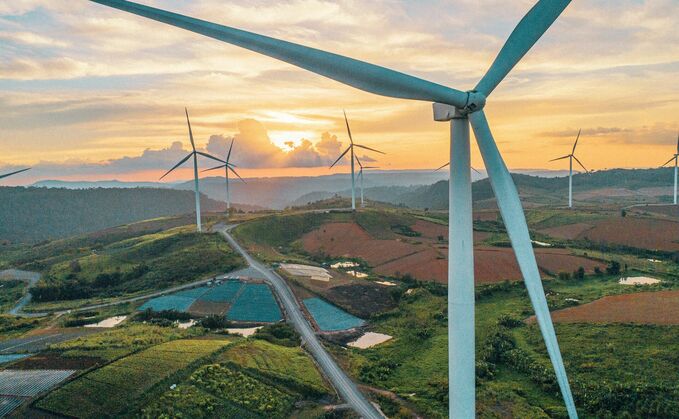
Listed infrastructure is inherently aligned with many client sustainability objectives. These companies exist to provide the basic services that are fundamental to the functioning of our societies. Access, affordability, safety, and reliability are all important social objectives related to the products and services that infrastructure companies offer. In delivering these services, companies also have a responsibility to treat the environment in a manner that won't jeopardize their ability to deliver these essential services over the long term.
Listed infrastructure companies are continually investing large sums of capital to deliver a variety of objectives. Without a solid balance sheet and a management team that acts appropriately as a steward of capital, these objectives would not be achievable. Social, environmental, and economic objectives need to be balanced—none of these areas can be addressed in isolation.
Listed infrastructure companies invest with purpose
The listed infrastructure space is unique in the amount of capital these companies can deploy. The amount of capital that can be shifted to solve some of the world's biggest environmental problems is significant. Over the last 10 years, companies have invested $350-$400 billion annually to deliver these essential services. Investment by electric utilities has been the largest component of this, and we expect it to continue to grow as demand for renewable generation and electricity transmission infrastructure accelerates.
Another interesting aspect about investing in listed infrastructure is the potential for carbon emissions reduction. While listed infrastructure only represents about 5% of global equity market cap, it represents a quarter of direct greenhouse (Scope 1) gas emissions. This is an important consideration because there has been an increase in generalist environmental, social, and governance (ESG) index providers adopting structural underweights to the most carbon-intensive industries as the basis for their ESG credentials. Unless investors like us continue to make the case that investing in and engaging with carbon-intensive businesses can still be ESG-friendly, listed infrastructure companies are at risk of being even more underrepresented in a broader global equity allocation going forward.
Alignment with the UN's Sustainable Development Goals
Infrastructure as an asset class has the potential to directly support progress toward over 70% of the UN's Sustainable Development Goals (SDGs). The major SDGs that we typically see listed infrastructure companies aligning with include:
- SDG 6: Clean water and sanitation. Water utilities distribute water, treat wastewater, and lead educational programs encouraging lower use of water resources.
- SDG 7: Affordable and clean energy. Many of these companies are actively involved in increasing renewable energy consumption, decreasing energy consumption intensity, and developing new transmission infrastructure— all while ensuring customer affordability.
- SDG 8: Decent work and economic growth. Listed infrastructure companies invest in economic productivity, employ policies on resource efficiency, can demonstrate progress on diversity and inclusion, and take steps to ensure the health and safety of employees.
- SDG 9: Industry, innovation, and infrastructure. Some companies are involved in the provision of passenger and freight transport. We also see potential for companies across sectors to reduce operational carbon intensity.
- SDG 11: Sustainable cities and communities. Transport infrastructure companies operate and develop public transportation infrastructure which has a key role to play in the sustainable cities of the future.
- SDG 13: Climate action. Listed infrastructure companies can align with SDG 13 by setting and meeting aggressive climate reduction targets and improving education and awareness of climate change in their communities.
Governments and businesses are prioritizing sustainable practices
Listed infrastructure companies are highly regulated businesses, and often their sustainability initiatives can be linked to public policy. Regulators and policymakers can add further support for sustainability by providing financial incentives for reaching specific goals, preferential treatment for specific investments, as well as allowances for proof-of-concept investments and frameworks for pilot projects to prove the commercial application of certain technologies before the deployment of large amounts of capital.
When it comes to the potential for sustainable impact, one advantage publicly traded infrastructure companies have over their private market counterparts is scale. Many of these companies are the largest employers in their respective regions, providing them an outsized impact on policy direction.
More companies are moving from "laggards" to "leaders"
One of the most common questions about the sustainability initiatives of listed infrastructure companies is how these initiatives are reflected in a company's stock price. Just a few years ago, ESG and sustainability expertise was arguably the domain of a few companies. Now, it's increasingly seen as the domain of many, providing a wider opportunity set from which to identify stocks that have positive exposure to sustainability trends but are still trading at compelling valuations.
Today, we believe there is more clarity than ever regarding what it takes for a listed infrastructure company to move from a laggard to a leader in terms of its approach to ESG and sustainability. We typically see a company's sustainability initiatives start with management planning, establishing and measuring achievable targets, and communicating this sustainability strategy to stakeholders. Ultimately, the company's willingness to provide transparency on its initiatives allows market participants to hold the company accountable for demonstrating progress toward any published targets. The predictability of this process helps give us confidence to invest earlier in a company's evolution.
Conclusion: The impact potential of listed infrastructure
We believe infrastructure has tremendous potential for social and environmental impact. Most listed companies are making good progress on sustainability efforts, and we expect this to continue. From our perspective, pressure from a variety of stakeholders to do better in these areas is positive. It increases the pool of potential investments to choose from as we seek to deliver our clients both attractive investment performance and exposure to companies that are doing good.
Source: calculated by OECD https://www.oecd.org/finance/Sustainable-Infrastructure-Policy-Initiative.pdf
Investing involves risk, including possible loss of principal. Past performance does not guarantee future results. Infrastructure issuers may be subject to regulation by various governmental authorities and may also be affected by governmental regulation of rates charged to customers, operational, tariffs and changes in tax laws, regulatory policies and accounting standards. Foreign securities involve special risks, including currency fluctuations, lower liquidity, political and economic uncertainties and differences in accounting standards.











